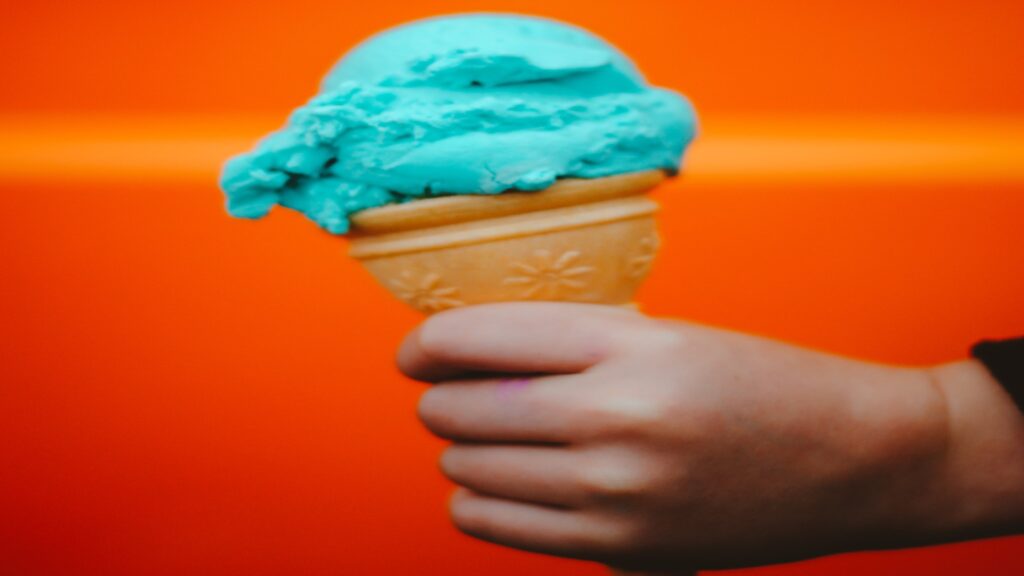
It’s not that hard to make a natural blue dye. Just take a red cabbage, cut it into pieces, and boil it. What you get is a purple broth that turns bright blue when you add some baking powder.
Children have been doing this for decades, but researchers have struggled to turn this or similar natural blues into a stable and abundant colorant—one that could be used to naturally dye your favorite candies, sodas, or ice creams. Now, a team says it has found a way—and the key lies in the humble cabbage itself.
It’s a “significant advance,” says Mas Subramanian, a chemist at Oregon State University, Corvallis, who was not involved with the work. In 2009, Subramanian discovered a new blue pigment, though not one to be eaten; it hit shelves this year as an artist’s paint. But the art world was looking for a deep blue like Subramanian’s, while the food world is chasing a natural source of a lighter cyan blue to color ice cream or candies, he says.
Cyan is also needed to create other colors, especially green, says Rebecca Robbins, senior principal scientist at Mars Wrigley, who was involved in the new work. “The color blue is used in more products than consumers realize.”
The food industry mostly relies on two synthetic dyes to create blue candies, cereals, and drinks: “brilliant blue,” also known as E131, and indigotine, or E132. Although these work well, “There has just been a really large push by consumers to get rid of synthetic ingredients in their food,” says Pamela Denish, a biophysicist at the University of California, Davis.
Replacing current dyes with natural colorants has proved difficult, however. That’s in part because there are few natural blues in nature. Pigments called anthocyanins, including those in red cabbage, can produce a blue color. But they’re not very stable, and they have a lot of purple undertones, Denish says. The latter becomes a problem when blending it with yellow to create green. “Purple plus yellow equals brown, so you’re not going to get a very vibrant green,” she says. That’s also a problem of spirulina blue, a crude extract derived from spirulina algae that has been approved in the United States as a natural dye for some foods.
The bar for any new blue is high, says Erick Leite Bastos, a chemist at the University of São Paulo, São Paulo, who is working on developing a blue dye derived from beetroot. On top of being natural, the perfect blue dye must be easy to use, safe to eat, cheap to produce—and “have a hue that people like,” he says.
In the new study, Denish and colleagues tried to get anthocyanins to hold onto their true blue color. The pigments in red cabbage are a mix of different molecules, and the researchers concentrated on a particularly promising one, which they call P2. Mixing this molecule with aluminum ions led to complexes with three of the P2 molecules arranged around one aluminum ion like spokes on a wheel. The complex was a stronger, more stable blue.
That only solved part of the problem, however. Only about 5% of the anthocyanins in red cabbage are P2, making the process terribly inefficient. Searching through databases of enzymes, the scientists hit on one—from bacteria—that could help convert some of the other anthocyanins into P2. And mutating the enzyme increased its efficiency. Now, about half of the anthocyanins in red cabbage could be turned into the blue P2 molecule, the team reports this week in Science Advances. “All of that is cleaned out of the final product,” Denish says. “So there’s not actually any bacteria or any enzymes in the pigment itself.”
The new candidate blue still faces many hurdles. For one, producing it takes a lot of effort: With the mutated enzyme, the researchers can extract only about 75 milligrams of blue from 100 grams of red cabbage. And, Bastos notes, “It is yet to be determined whether these metal complexes are safe for human consumption.”
Still, the mere chance of seeing her work make it out into the real world excites Denish, who is just finishing her Ph.D. Some of her friends are expecting more tangible returns, however. “I have a lot of friends who think that I’m going to be able to get them free candy,” Denish says. “I don’t think that’s how this works.”
 How cranberries could improve memory and ward off dementia
How cranberries could improve memory and ward off dementia Wild blueberries (bilberries) can help tackle adverse effects of high-fat diet
Wild blueberries (bilberries) can help tackle adverse effects of high-fat diet Blue-eyed humans have a single, common ancestor
Blue-eyed humans have a single, common ancestor Food Additives Linked To Hyperactivity In Children, Study Shows
Food Additives Linked To Hyperactivity In Children, Study Shows